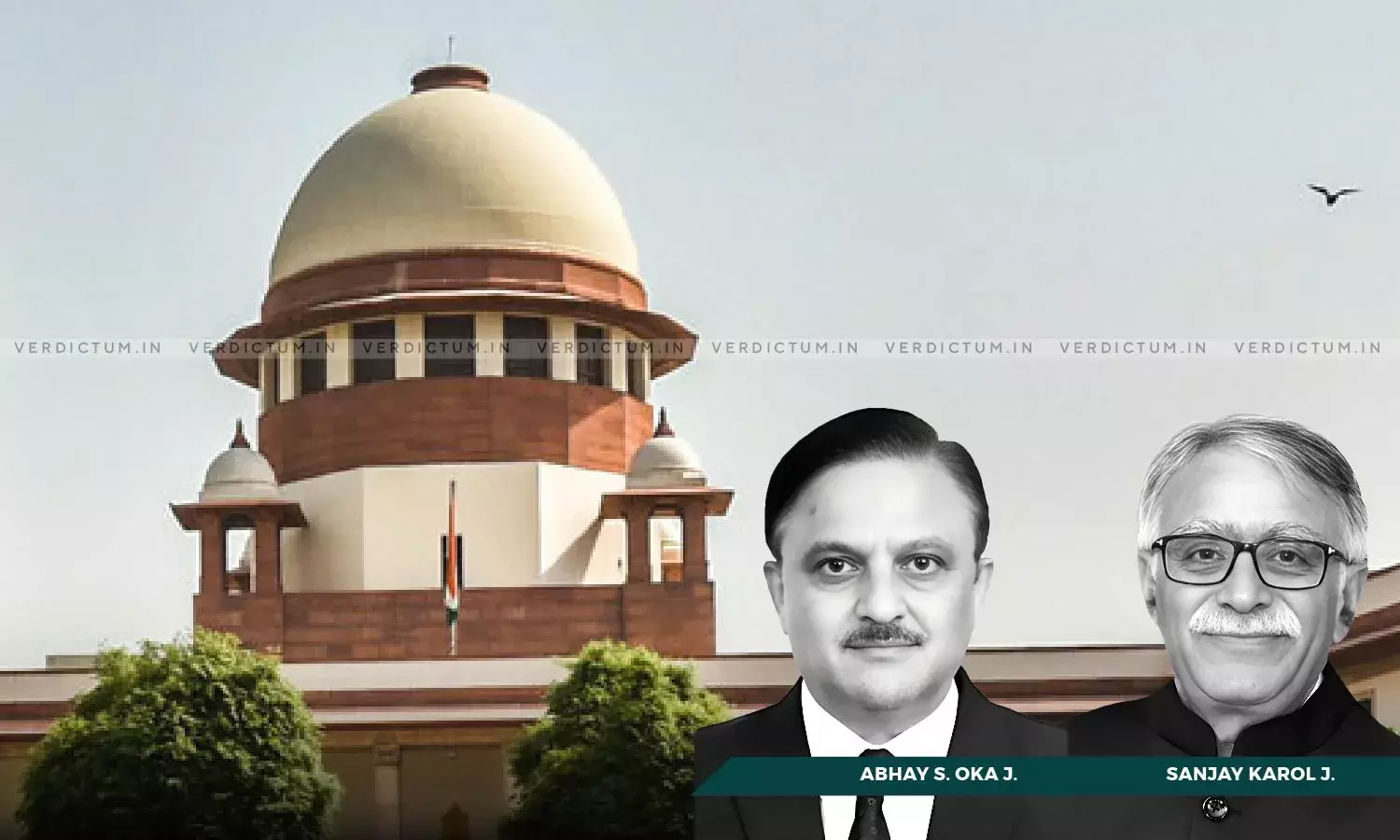Granting Blanket Exemption From Requirement Of Obtaining Environmental Clearance Unconstitutional: Supreme Court

The Supreme Court observed that granting blanket exemption from the requirement of obtaining Environmental Clearance is unconstitutional as it violates Article 14 of the Constitution of India.
The Court struck down item 6 of the substituted Appendix-IX forming part of the 2020 notification and item 6 of the amended 2023 notification (both issued by Ministry of Environment and Forests)
The Court observed that citizens are major stakeholders in environmental matters and therefore power to dispense with the requirement of publication of prior notice under Rule 5 of Environment (Protection) Rules cannot be casually exercised.
The Court observed thus in a batch of appeals against the judgment and order of the National Green Tribunal (NGT) by which it rejected the review petition filed by a person for seeking review of the judgment.
The two-Judge Bench comprising Justice Abhay S. Oka and Justice Sanjay Karol held, “The State Pollution Control Boards are required to monitor the compliance status of the SOP/environmental safeguards. As entry 6 is arbitrary, the Office Memorandum is of no consequence. Hence, on account of the violation of Article 14, item 6 in the impugned notification, as well as the amended impugned notification, will have to be struck down. As noted earlier, the object of the EP Act is to protect and improve the environment. Apart from the illegality committed by non-compliance with sub-rule (3) of Rule 5 of the EP Rules, the exemption granted without incorporating any safeguards is completely unguided and arbitrary. Grant of such blanket exemption completely defeats the very object of the EP Act.”
Advocate Nishtha Kumar represented the appellant while Advocate Gurmeet Singh Makker represented the respondent.
Brief Facts -
A notification was issued in 2006 by the Ministry of Environment and Forests (MoEF) in exercise of powers under Section 3 of the EP Act read with Rule 5 of the Environment (Protection) Rules, 1986 (EP Rules). The notification provided that the projects falling under Categories A and B set out in the Schedule to the notification will require prior Environmental Clearance (EC) from the concerned Regulatory Authority. The Regulatory Authorities for different projects were named in the notification i.e., Central Government for A category and State Environment Impact Assessment Authority (SEIAA) for B category.
Thereafter, EC notification was partly modified and though the NGT struck down a part of the second EC notification, Appendix IX was not touched. In the Original Application, the challenge before the NGT was to the notification which modified earlier EC notifications. Appendix IX to the second EC notification provided for exempting certain cases from the requirement of obtaining EC. By the impugned notification, Appendix-IX was substituted and the substituted Appendix-IX provided that the prior EC will not be required in the thirteen cases set out therein. Accordingly, the said application was disposed of by directing Ministry to revisit the impugned notification within three months and then an application for review was filed, which was dismissed.
The Supreme Court in view of the above facts noted, “… citizens are major stakeholders in environmental matters. Their participation cannot be prevented by casually exercising the power under sub-rule (4) of Rule 5. … The document recording the satisfaction of the competent authority about the existence of public interest and the nature of the public interest ought to have been produced by the Ministry. But, no such document was produced. Only one conclusion can be drawn. The drastic decision to invoke sub-rule (4) of Rule 5 was made without any application of the mind. Hence, the decision-making process has been vitiated.”
The Court further said that an undue haste has been shown by the Central Government in issuing the notification during the nationwide lockdown and therefore, the inclusion of item 6 of the substituted Appendix-IX will have to be held illegal.
“The term “linear projects” is very vague. The process to be adopted for excavation has not been set out. Thus, item 6 is a case of completely unguided and blanket exemption, which is, per se, arbitrary and violative of Article 14 of the Constitution of India. There is no provision for setting up an authority which will decide whether a particular linear project is covered by item 6”, it also noted.
The Court observed that SOP creates no regulatory machinery to ensure the implementation of the terms of the SOP and does not refer to item 6 at all. It added that the same merely refers to the activities relating to the identification to borrow areas to obtain earth or soil materials and does not refer to extracting ordinary earth for linear projects, such as roads, pipelines, etc. and therefore, the said SOP can hardly be said to be in terms of what the NGT ordered the Central Government to do.
“We are not entertaining a challenge to item 7 of the impugned notification. As none of the respondents have challenged the impugned notification, they will have to implement the directions issued in terms of paragraph 9 of the impugned judgment regarding item 7. … Thus, notwithstanding the specific directions issued in paragraph 8 read with paragraph 9 of the impugned judgment, no safeguards have been provided, such as laying down processes, the mode and the manner of excavation and quantum”, it concluded.
The Court, therefore, struck down item 6 of the substituted Appendix-IX forming part of the 2020 notification and item 6 of the amended 2023 notification.
Accordingly, the Apex Court partly allowed the appeals and quashed item 6 of the two notifications.
Cause Title- Noble M. Paikada v. Union of India (Neutral Citation: 2024 INSC 241)
Appearance:
Appellant: AOR Nishtha Kumar, Advocates Vanshdeep Dalmia, and Shrom Sethi.
Respondent: AOR Gurmeet Singh Makker


